While most runners would agree that developing healthy habits for exercises for their legs is important, not all runners focus on maintaining upper body training as well. I’ve noticed when I exercise my core and upper body regularly, I feel that I can run with a better form for longer distances.
Push-ups are a great exercise for runners because they help develop many different muscles that can help with overall running performance, such as maintaining control of the torso, arms, posture, and relieving pressure on the spine.
I enjoy going hiking, but maintaining balance in rough areas can be difficult. Since I’ve developed more core strength, I find maintaining my balance is easier and I can climb rocky hills easier. Having a well-balanced upper and lower body can be very helpful in all the activities you’re eager to pursue. We’ll discuss how push-ups can provide some very helpful abilities you may want.
Why Do Push ups?
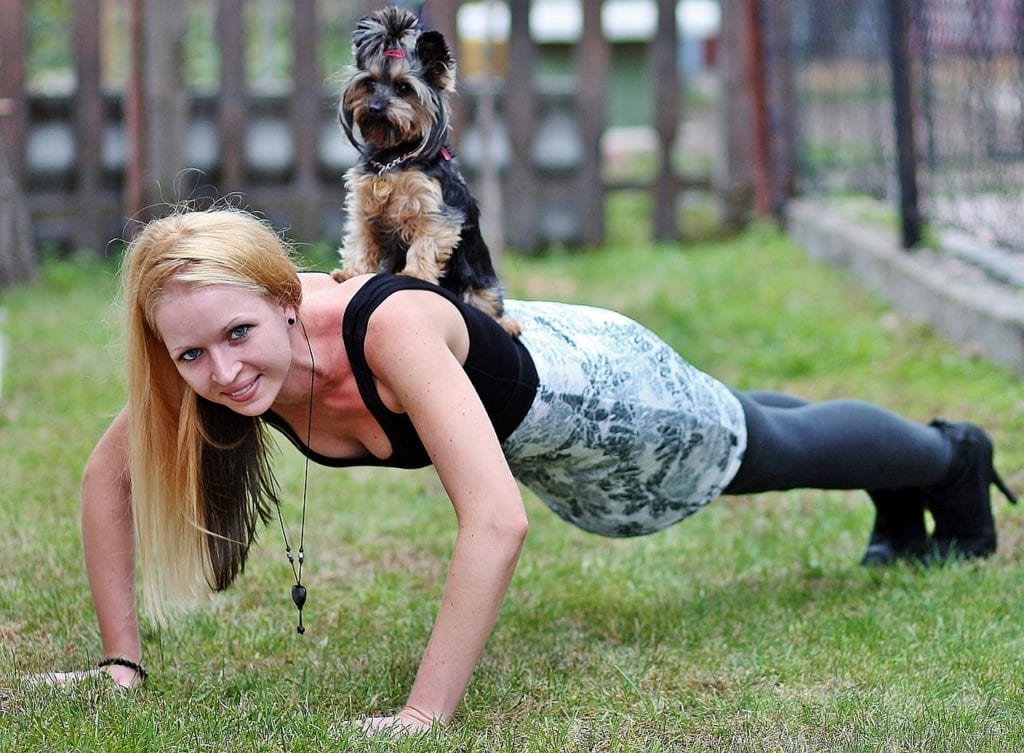
Runners, hikers, & walkers all place stress on their bodies over time. Using your legs is a key for running, hiking, and walking. If you’re using your leg muscles a lot, you are also placing strain on the upper body.
Your running, walking, and hiking form may suffer as you push your body to travel for longer periods. Some people tend to slouch a bit and decrease their exercise efficiency and increase their likelihood of tiring and injury.
As you do push-ups, you’re allowing yourself to increase your core and upper body strength, as well as some leg and glute muscles. The core can help you maintain correct posture longer and increase your control as you run, hike with a load, or walk.
As you maintain your posture and have greater control, you can breath easier, support your bones better, and effectively move with correct biomechanical movement that can be aided by arm, torso, and leg muscles strength.
Your Average Push up
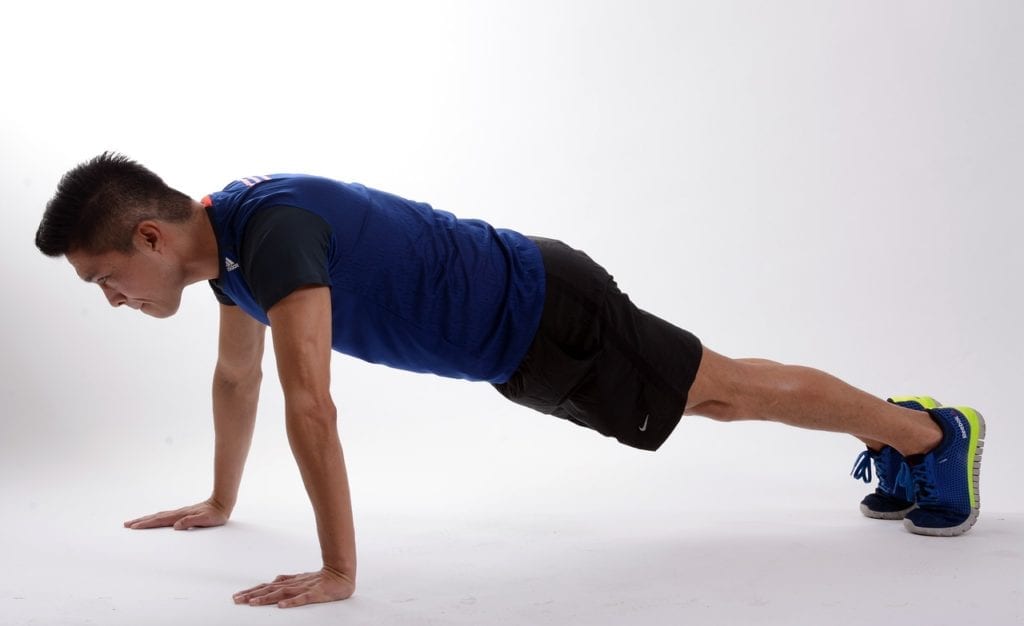
A push-up can be done in so many ways that it’s important to establish a baseline for your average push-up.
To do a push up you’ll want to place your hands flat on the floor about shoulder-width apart, with your arms extended under your shoulders. Extend your legs and form a straight line from the heels to the head. Place your feet close together and balance on your toes.
Maintaining this position, keep your head inline with your body and bend your arms so they splay out to the side. Once your chest reaches the ground or close to the ground, push your body back up so your arms are fully extended again.
One of the main things to remember that will really make your push-up effective is keeping the straight line from your head to the heels, so your hips don’t rise or fall during your push-up.
Better Push up for Runners, Hikers, and Walkers?
A standard push-up works well for runners, hikers, and walkers because it strengthens the arms and torso.
- Runners need to have strong arm to keep their arms at a good angle (about 90 degrees) to keep running efficiently for long distances. How they swing their arms influences how they step while running. Arms that are too bulky won’t help, but strong arms do.
- Runners also need a strong core to run with efficiency. Push ups can help strengthen the abdomen, the obliques, and the lumbar muscles. With these muscles runners can achieve stability and prevent improper form. Slouching or other types of improper form can make runners compensate with their legs or back, causing fatigue, possible strain, or injury.
- Hikers benefit from push ups because when they carry backpacks, their core and shoulder muscles are strengthened during a push up. These muscles help hikers better maintain proper form while hiking, so they are less likely to try to compensate while carrying a backpack and can carry heavier loads better.
- Walkers will benefit from push ups because it strengths the core and arms. These muscle are especially helpful during longer distance walks where stability and maintaining proper strides are needed.
Other types of exercises may appeal to you more and may be more beneficial for the activity you’re doing. Here are 3 types of alternative exercises like a push-up.
1. The plank
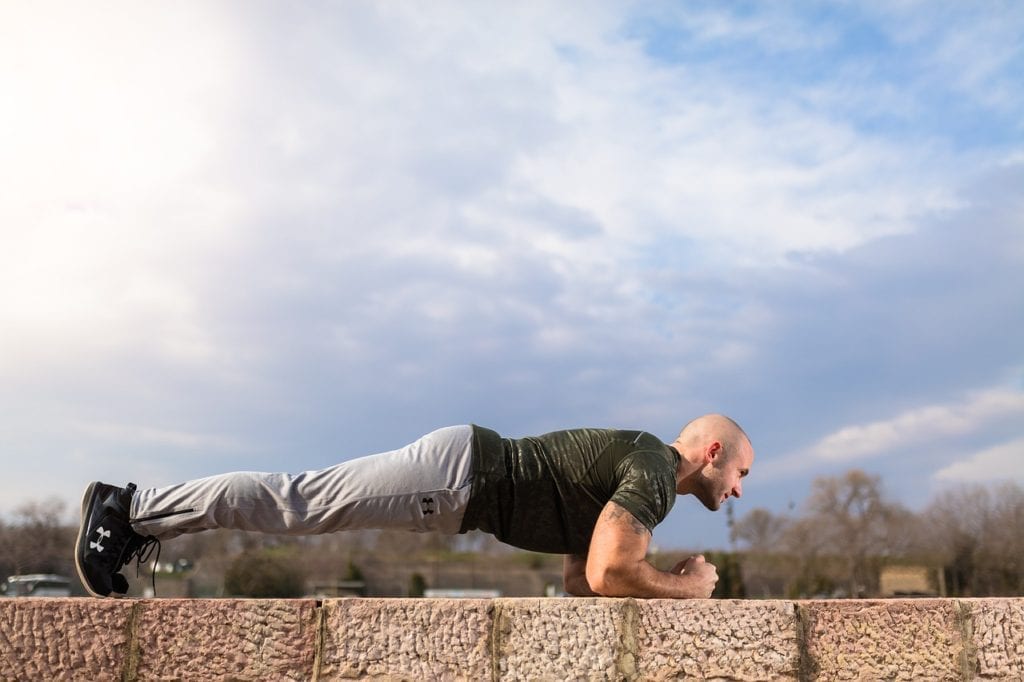
Another option is to plank. This is not a push-up but very similar and may benefit all types of runners, hikers, and walkers. To plank, maintain a straight body while on your elbows and toes.
- Most of the same muscles are used, although in different ways for the arms and shoulders.
- Some of the main benefits are that it strengthens the core and can improve posture.
- You can modify the plank by using your elbows and knees or trying to maintain a push up position where your arms are fully extended.
- Don’t forget side planks can be beneficial too.
2. The Bird Dog
One exercise that might be easier for some while still helping many of the same muscles is the bird dog. While on your hands and knees lift one arm and the opposite leg. Hold and then switch to the other arm and leg.
- This exercise will help your abdominal and back muscles get stronger. and help you with the three exercises we’ve discussed.
3. The Cobra Pose

This exercise is done by those who practice yoga, but it can be beneficial for those looking to stretch and strengthen. The cobra is done by laying on the floor and pressing up with your arm, like when doing a push-up, while keeping your hips and legs on the ground.
- This exercise can strengthen your abdominal muscles and stretch the chest and shoulders. There are various methods to do a cobra, but generally you would maintain a slow fluid push up and lower back down to the floor motion.
- If you have any back pain you can modify it to push up less.
- Slower movements can help maintain good form and increase muscle engagement.
- This may be helpful for hikers who carry loads on their shoulders, and runners who need to stretch their abdominal muscles.
Cautions When Doing Push ups
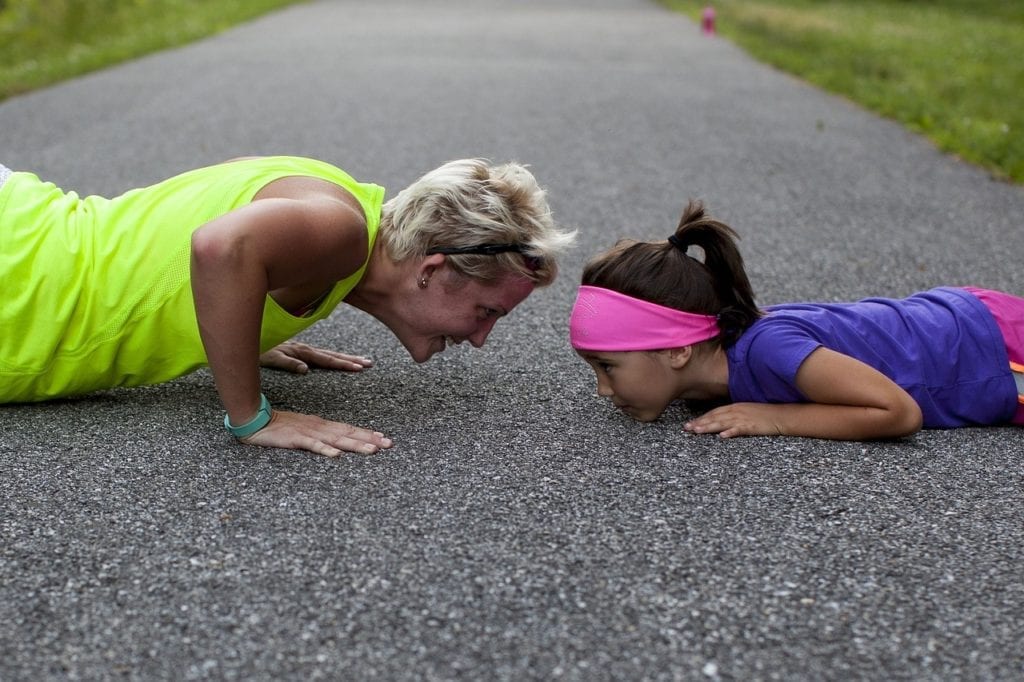
Doing push-ups can be fun and easy, but you can also do it the wrong way and strain or hurt your back. It’s best to adapt the push-up to your abilities and start slow and steady.
Form
Using the proper form when doing a push-up will ensure you will prevent problems from occurring. This means that you’ll need to be aware of how you place your hands, your feet, and your back position.
If you have joint issues with your hands, getting push-up bars or other devices can save your wrist any strain and allow you to do your push-up in varying ways.
If your upper body strength is limit, changing to a knee push-up can help you get started and help you keep your back straight, so you have good form.
Having proper shoes will ensure you can have the grip needed to maintain a steady push-up and protection in areas that have sharper surfaces.
Speed
The more you increase your speed the less likely you will use proper form. To get the most out of your push up slow down the speed and focus on body position and muscle engagement.
Making sure you’re doing the push-up correctly will enable you to see how many repetitions you can do correctly and to understand better how they are beneficial for your muscles when you hike, run, or walk.
Getting a second point of view or recording yourself with your phone can help you better see what you’re doing well with and what could be improved.
Push up Muscle Developed
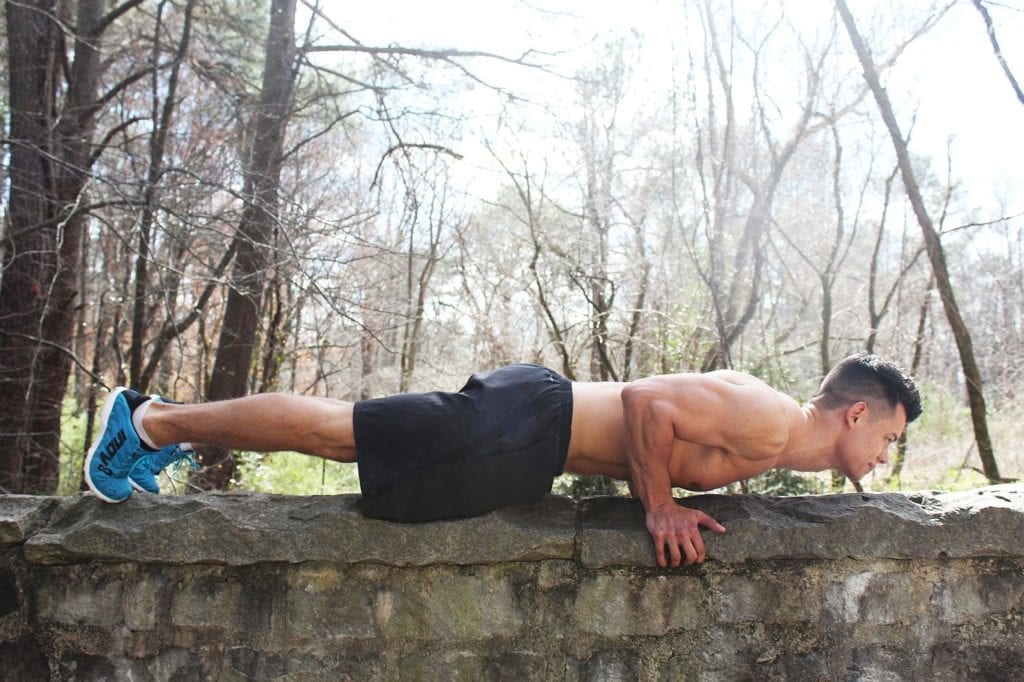
As you do push-ups consistently you will start to develop your muscles and can increase the number of push-ups you do. As you continue over time, it will be important to vary the type and number of push-ups you do, so your muscles are challenged and you don’t plateau.
In order for you to get the most out of your push-up routine, record your exercise routine achievements and set goals to increase your capacity.
It may be helpful to set aside time for each push-up session to change your hand position for part of your routine. Widening your hand position or bringing them together are two ways to work new muscles and work others in a more challenging way.
100 Push ups in 30 Days Chart

Once you’ve been able to get used to push-ups for several weeks, trying to work towards 100 push-ups can be a great way to strengthen your body and help your overall health.
This chart shows working towards 100 push-ups in 30 days, but their no reason you can’t extend it to 60 or 90 days if needed.
Remember that it will benefit you the most if you can adapt your push-ups and schedule to meet your needs. Slow and steady wins the race.
Core and Spine
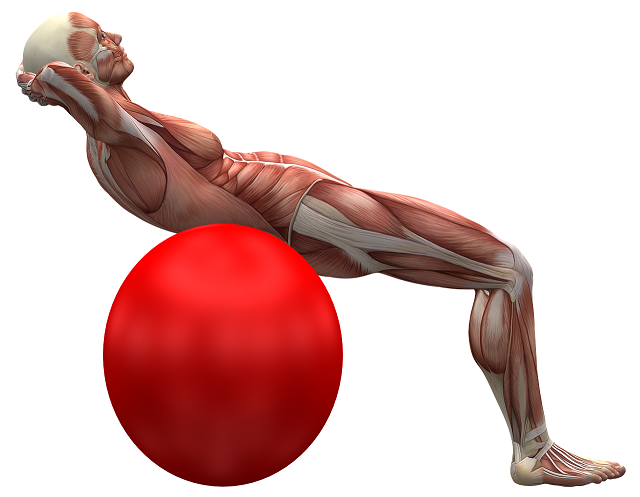
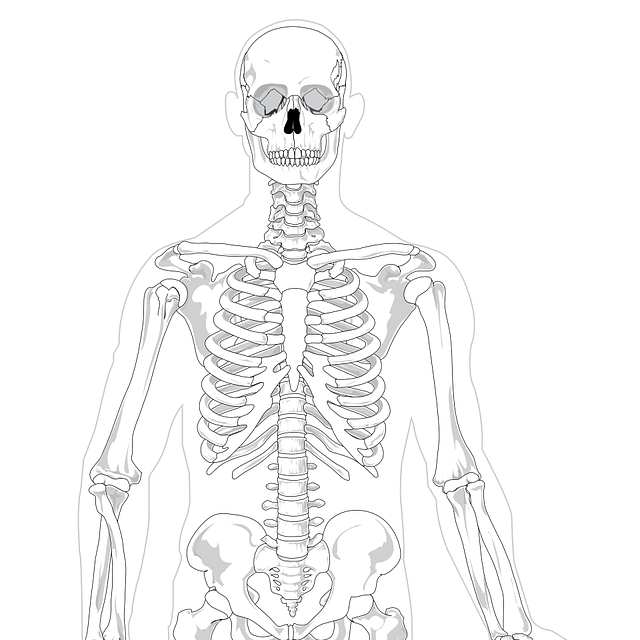
As you work on push-ups, your lower back, stomach, and sides (or your core) will be strengthened over time.
To prevent bad form, or worse straining or injuring your back, try to practice laying on the floor and engaging your core muscles. Feel how your shoulder muscles feel when engaged as well as your glutes. Then start a push-up and notice each of your muscles that are engaged.
If you’re not engaging the muscles discussed above, try to focus on engagement and still maintain proper form. Getting some help or using a mirror to check your form can alert you to how you’re doing.
Just remember that if your core is tight and your spine is straight, you’re likely in a good position while doing your push-up. If at any time you start to feel pain, it’s time to stop and figure out what’s wrong.
Arms
When you do a push up your engaging your triceps in your arm and the shoulders. While this may not seem to be too helpful for runners, hikers, and walkers, it does benefit the overall arm strength needed for long-distance activities.
The triceps will help you repeatedly propel your arms back and forth over the course of your activity. This in turn gives you the ability to keep up momentum and balance. You’ll be more likely to have proper form and last longer.
Chest
As you do your push up you’re developing your pectoral muscles. Your chest muscles can be beneficial when hiking with a backpack. Along with your shoulders and back, the chest muscles help to give you the stability to carry loads for longer periods.
If your chest muscles are not developed and your load is heavy, your leg might be fine, but your form will start to suffer under the weight and you will be adjusting and compensating to feel comfortable with the load.
Over time your back will likely start to strain in both the upper and lower areas, depending on what happens with your form while hiking.
Modified Push ups
It’s important to modify your push-up to your needs and abilities. Make it easy for you to get used to doing your push-up the right way, then you won’t have to relearn it, which could take some time.
If you plan on doing 30 or 50 push-ups a day, then getting into a healthy routine of checking your form will aid in getting the most success and benefit for your efforts.
The goal should always be to start slow and work toward mastery, not toward numbers. Then you’ll be able to get the number you want easier when your form is great.
To modify your push-ups follow the video above and research other push-up techniques to get your needs met.
A good starting point is to try a regular push-up and see how it feels. If you can only do five push-ups properly, that doesn’t mean you need to modify your push-ups. You could do five push-ups three times a day.
The best idea is to do what you feel comfortable doing and stick to it until you have strengthened your muscles enough to try something new.
Conclusion
Push-ups are a great way to strengthen muscles in your body and can help runners, hikers, and walkers with their exercise goals.
Learning to do a push-up the right way will help you achieve your goals faster and prevent injury. While adopting a push-up for your needs will give you the room to grow and challenge your muscles so you don’t plateau.
Thanks for visiting Helpshoe.com
Related Questions
Do I need push-up bars?
If you experience any strain on your wrist joint, it’s a good item to invest in push-up bars. They can prevent sprains, cysts, and nerves from being aggravated, and give you a bit more room to dip down during the push-up.
Push-up bars will place your hands in a different position, than a regular push-up. Getting rotatable bars may better serve your needs.
Should I swim if I run?
Yes. Swimming is a great alternative to running with little joint impact and is still great at creating strong muscles. Runners need downtime to let their legs heal and recover after marathons, races, injuries, and running over time. Swimming can provide the rest needed for recovery, while still providing most of the benefit of running.

